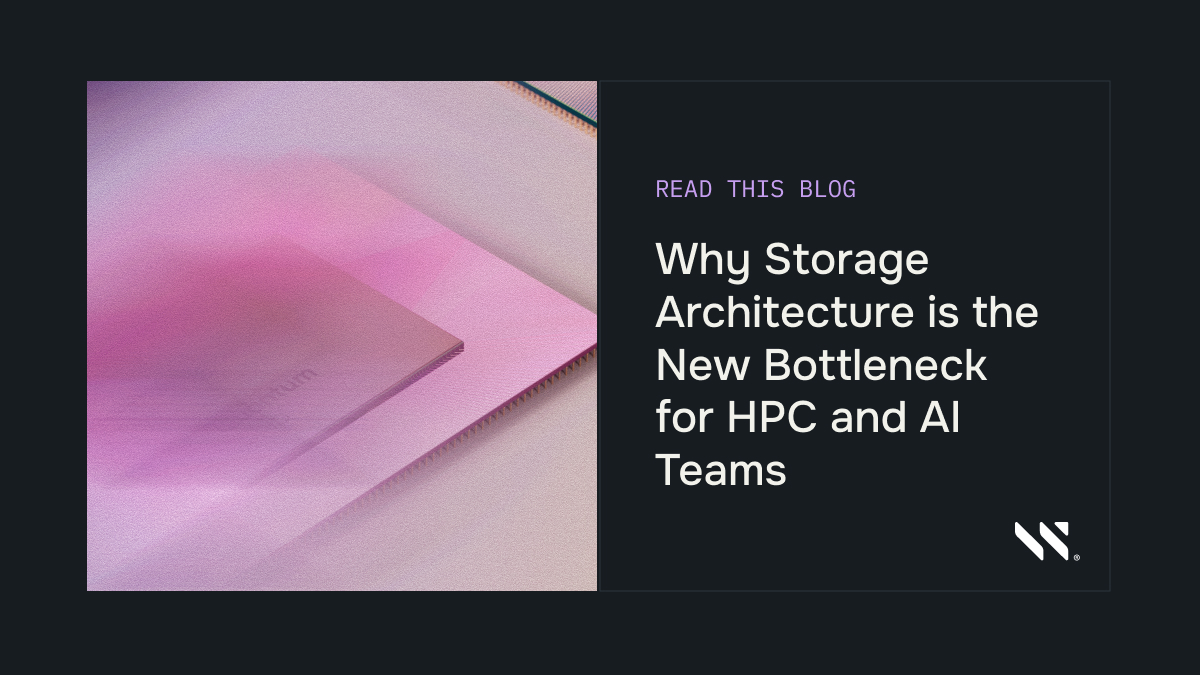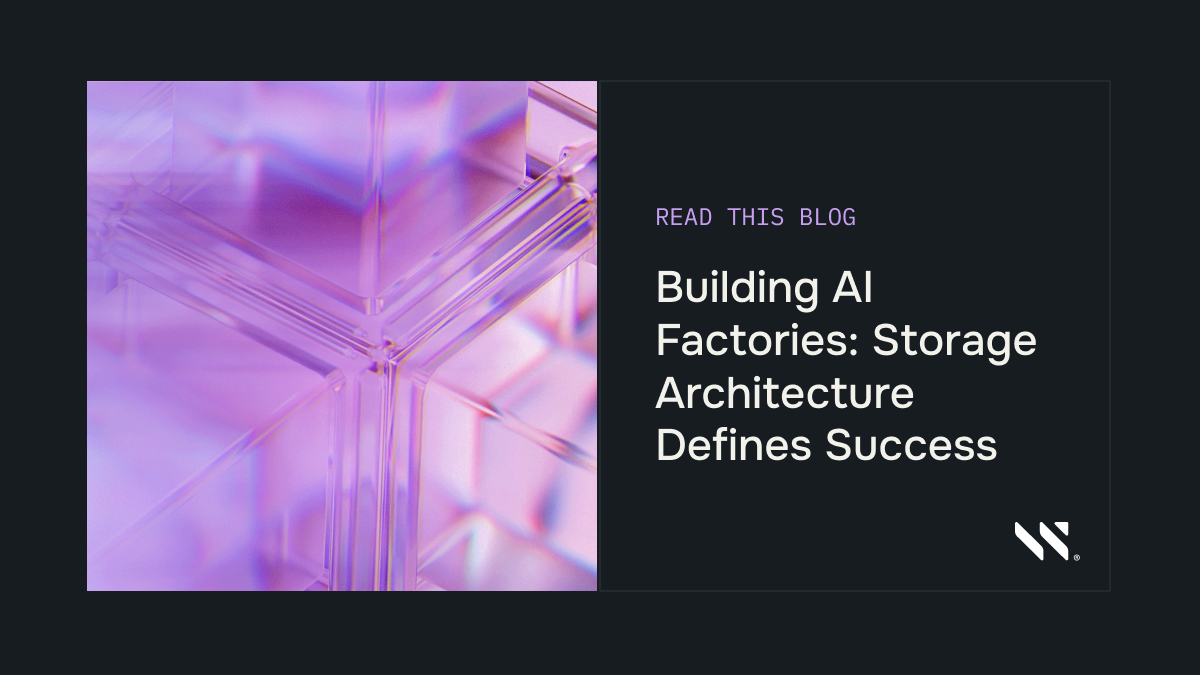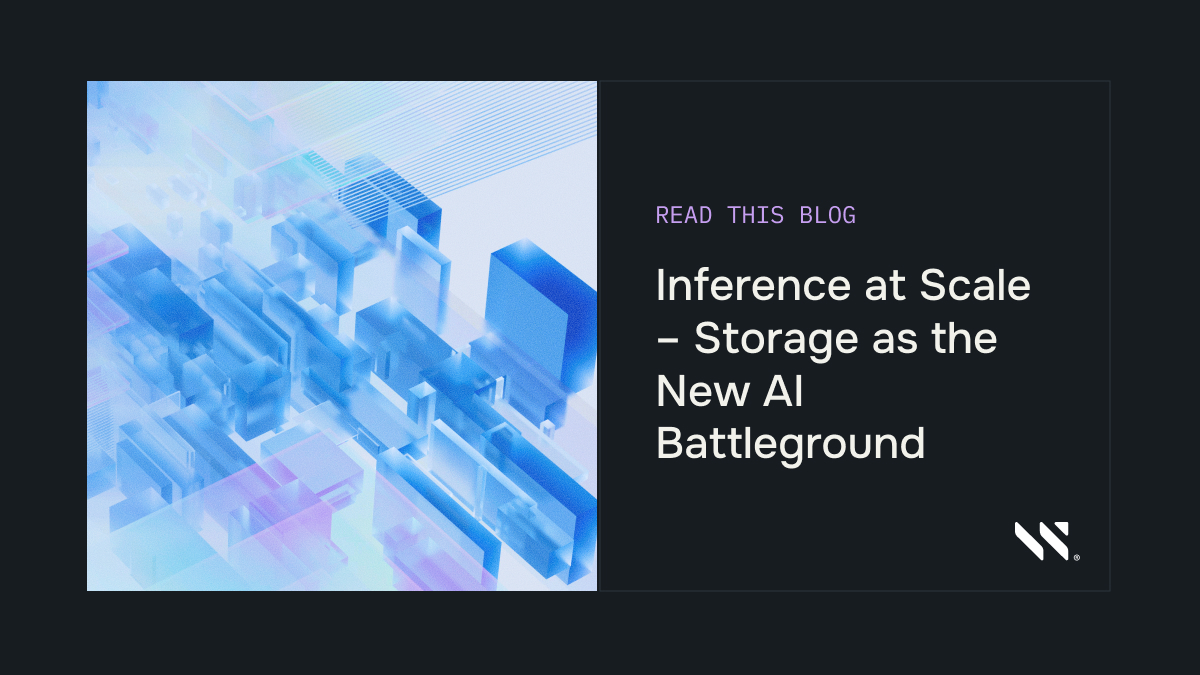Midstream Flexibility: Retrofitting AI Infrastructure without Starting Over


TL;DR When I talk to customers, I hear the same thing again and again: “Our cluster was fine for training, but everything broke in production.”
At scale, inference is even more demanding than training—and rigid infrastructure can’t keep up. The good news is you don’t need to start over to get the performance you need. With the right upgrades and software-defined layers, you can retrofit what you already have. That’s exactly what NeuralMesh™ by WEKA® is built for: helping you pivot from training to inference, scale seamlessly, and stay competitive without ripping and replacing what you’ve already built.
AI infrastructure isn’t always built for change. Many organizations find themselves locked into hardware decisions and data architectures that were right for one workload but don’t translate well to the next. But as models evolve and new business demands emerge, rigid infrastructure can become a real bottleneck.
The good news is that flexibility doesn’t have to start from scratch. With the right upgrades and software-defined layers, you can retrofit what you already have and make it work for both training and inference. Even in legacy environments, small changes—like modular upgrades, software-defined layers, and smarter workload management—can unlock significant gains.
How do storage, networking, and compute limitations impact AI inference performance?
Customers often tell me: “Our cluster was fine during training, but everything broke when we had to scale in production.”
Rigid infrastructure has a way of showing its limits when real-world demands hit. As we’ve discussed in the past, the issues aren’t always obvious in testing, but they surface quickly when workloads move into production:
- Fixed compute resources: GPU clusters with networking and data platforms tuned for training can’t always keep up with evolving and growing needs of real-time inferencing, leaving you stuck with slow performance or spiraling costs.
- Limited networking capacity: Data movement that was manageable for a single experiment might choke under production-scale throughput, causing latency and bottlenecks. Latency can be directly correlated to end user experience—and ultimately competitive advantages—in GenAI workloads. As recent benchmarks show, even small increases in latency directly impact user satisfaction and engagement across chat, coding, and translation use cases.
- Inflexible storage design: Storage built for one workflow can become a bottleneck when new AI workloads need to read, write, and transform data in real time.
These gaps don’t just slow down performance—they slow down progress. When your infrastructure can’t pivot to support new models or evolving use cases, the result is missed opportunities and escalating costs. In AI, where the landscape changes every quarter, those gaps can quickly become business risks.
Why do software-defined layers and modular upgrades matter for scalable AI?
Retrofitting flexibility isn’t about scrapping what you have and starting over. It’s about finding the parts of your infrastructure that can adapt to new pressures without a full rebuild. Increasingly, experts are exploring software to abstract compute, storage, and network resources to increase agility and scalability without disruptive forklift upgrades.
These are the levers that let you stay competitive without overhauling your entire stack:
- Modular upgrades: Small hardware changes—like boosting networking bandwidth or adding more flexible storage—can have an outsized impact. These upgrades can help eliminate bottlenecks without forcing you to re-architect from scratch.
- Software-defined layers: Providing a layer of abstraction that sits on top of your existing infrastructure, freeing you from vendor lock-in and hardware constraints. This software layer is what makes it possible to tune performance and move workloads without getting stuck.
- Heterogeneous compute: Not every workload needs the same resources. Adding GPU acceleration alongside CPU resources—or tapping into GPU-as-a-service providers—can help you get the most from what you already have, extending the life and reach of your existing infrastructure.
By expanding your definition of infra to include the application layer and the intelligent placement of compute, networking and storage, you can add flexibility without redesigning and redeploying everything. That’s how you turn rigid systems into platforms that can evolve as your business and data demands change.
NeuralMesh: Flexibility When the Workloads Get Tough
I talk to customers who have invested millions into building out their training infrastructure. At the time, it felt like the right call—training was the priority, and “good enough” was good enough. Then they hit the wall with inference.
I’ll give you an example: One of our large language model customers built their first-generation training environment on AWS. At the time, that worked fine—they had a clear design for training, and they were able to get models off the ground quickly. But as soon as they moved into inference, the cracks showed. Latency went up, user experience suffered, and the costs of scaling were far higher than they expected.
What turned it around was NeuralMesh™ by WEKA®. Instead of ripping out their infrastructure, they layered WEKA on top. That gave them the ability to dynamically shift resources from training to inference, and back again, on the exact same hardware. Later, when they decided to expand beyond AWS and add capacity on CoreWeave, NeuralMesh made the transition seamless. The same code, the same design—just running wherever they needed it to.
Here’s why it works:
- It’s software-defined. Because NeuralMesh is pure software, you can deploy it on the infrastructure you’ve already built.
- It’s containerized and microservices-based. That means you can dynamically shift resources from training to inference—or run both at once—without disruption.
- It reuses your training fabric. The same east–west GPU networking that powered your training runs can be repurposed for inference, where token-heavy, low-latency performance is critical.
- It’s portable. I’ve seen customers move from AWS to CoreWeave, or from the cloud back on-prem, without breaking their design. NeuralMesh makes that possible.
I’ve even had customers who chose another vendor for training come back to WEKA when inference exposed the cracks. That’s the boomerang effect we see again and again: when the workloads get tough, they realize flexibility matters—and NeuralMesh is what delivers it.
Why AI Infrastructure Flexibility Drives Performance, Cost Efficiency, and Competitiveness
The objective of retrofitting flexibility into your infrastructure is to unlock your potential to keep pace with everything else that’s moving—faster data, smarter models, and changing business priorities.
- Adapt quickly: Flexible infrastructure lets you adopt new AI models and techniques without months of planning and retooling. You can respond to evolving customer demands and new market opportunities on your timeline, not your vendor’s.
- Optimize cost: Flexibility also keeps budgets in check. When you can reallocate resources instead of overprovisioning, you make every dollar work harder.
- Stay competitive: In a field that changes faster than any other, rigid infrastructure can be the difference between leading the pack and falling behind. Flexibility keeps you in the race.
This is the difference between an AI system that delivers value and one that becomes a sunk cost. Flexibility—whether built in from the start or retrofitted after the fact—is the foundation that lets you keep up.
Flexibility Doesn’t Have to Start from Scratch
The biggest myth about flexibility is that it only belongs in greenfield deployments. But legacy infrastructure doesn’t have to hold you back. Retrofitting flexibility is about finding the leverage points—places where modular upgrades, software-defined tools, and smarter resource management can turn rigid systems into adaptive ones.
With the right levers and a clear focus on modular design and software-defined solutions, you can build an environment that adapts as fast as your business and your data demand. Because in AI, where change is the only constant, flexibility isn’t a nice-to-have. It’s the only way to keep moving.Wherever you are in your AI journey, WEKA can help you move faster, smarter, and with less friction. Learn how NeuralMesh delivers the flexibility, performance, and control your workloads demand.





